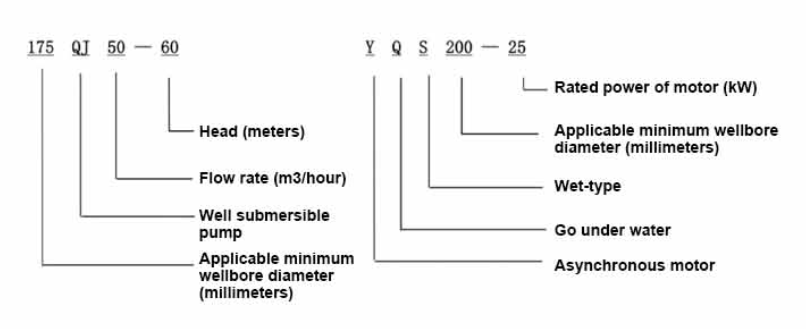Aug . 14, 2024 05:41 Back to list
Exploring the Benefits and Applications of Submersible Water Pumps for Efficient Fluid Management
Submersible Water Pumps Innovations and Applications
Submersible water pumps are an essential component in various industries, offering efficient solutions for moving water from one place to another. Designed to operate while submerged, these pumps have gained popularity due to their effectiveness in diverse applications, including agriculture, construction, mining, and even residential use.
What is a Submersible Water Pump?
A submersible water pump is a device that is placed underwater to pump fluids, primarily water. Unlike other pumps that need to draw fluid up to the surface, submersible pumps are designed to push water to the surface due to their operational design. This design involves a sealed motor that prevents water from entering and damaging the internal components, allowing for effective performance while fully submerged.
Key Features and Advantages
One of the significant advantages of submersible water pumps is their ability to handle high flow rates compared to other types of pumps. They can efficiently move large volumes of water, making them ideal for drainage or dewatering tasks. Additionally, their submerged design reduces the risk of cavitation, a phenomenon where vapor bubbles form, potentially causing damage to the pump.
Submersible pumps are also versatile and can be used in a variety of settings. In agriculture, for example, they are employed for irrigation purposes, transporting water from wells or reservoirs to fields. In construction, these pumps are crucial for dewatering sites, ensuring that excavations remain dry and safe. Furthermore, in residential areas, they can be used to remove floodwater from basements or to provide water for garden irrigation.
Types of Submersible Pumps
There are various types of submersible water pumps, each designed for specific applications
.submersible water pump

1. Sewage Submersible Pumps These pumps are engineered to handle wastewater that contains solid materials. They are commonly used in sewage treatment plants and in residential settings where effluent needs to be moved.
2. Effluent Submersible Pumps Designed for transporting greywater (wastewater that is not contaminated with human waste), these pumps are often used in septic systems and leach fields.
3. Deep Well Submersible Pumps These pumps are utilized in deep wells to extract groundwater. They are crafted to withstand high pressure and are typically installed vertically.
4. Hydraulic Submersible Pumps Powered by hydraulic energy, these pumps are often used in construction and mining for dewatering purposes, especially in challenging environments.
Maintenance and Potential Issues
While submersible pumps are designed for durability, maintenance is crucial to ensure longevity and efficient operation. Regularly checking the electrical connections, inspecting for wear and tear, and ensuring that the pump is free from debris are essential steps in maintenance. Potential issues such as overheating, clogging, and motor failure can occur if maintenance is neglected.
Conclusion
Submersible water pumps play an integral role in modern water management across various industries. Their ability to operate underwater allows for efficient water movement, making them indispensable in agricultural, construction, and residential applications. As technology continues to advance, we can expect submersible pumps to become even more efficient, incorporating smart features and energy-saving designs that will further enhance their utility and effectiveness. Whether for large-scale industrial use or small residential tasks, submersible water pumps are an invaluable tool in our effort to manage and distribute water efficiently.
-
Submersible Water Pump: The Efficient 'Power Pioneer' of the Underwater World
NewsJul.01,2025
-
Submersible Pond Pump: The Hidden Guardian of Water Landscape Ecology
NewsJul.01,2025
-
Stainless Well Pump: A Reliable and Durable Pumping Main Force
NewsJul.01,2025
-
Stainless Steel Submersible Pump: An Efficient and Versatile Tool for Underwater Operations
NewsJul.01,2025
-
Deep Well Submersible Pump: An Efficient 'Sucker' of Groundwater Sources
NewsJul.01,2025
-
Deep Water Well Pump: An Efficient 'Sucker' of Groundwater Sources
NewsJul.01,2025
-
 Submersible Water Pump: The Efficient 'Power Pioneer' of the Underwater WorldIn the field of hydraulic equipment, the Submersible Water Pump has become the core equipment for underwater operations and water resource transportation due to its unique design and excellent performance.Detail
Submersible Water Pump: The Efficient 'Power Pioneer' of the Underwater WorldIn the field of hydraulic equipment, the Submersible Water Pump has become the core equipment for underwater operations and water resource transportation due to its unique design and excellent performance.Detail -
 Submersible Pond Pump: The Hidden Guardian of Water Landscape EcologyIn courtyard landscapes, ecological ponds, and even small-scale water conservancy projects, there is a silent yet indispensable equipment - the Submersible Pond Pump.Detail
Submersible Pond Pump: The Hidden Guardian of Water Landscape EcologyIn courtyard landscapes, ecological ponds, and even small-scale water conservancy projects, there is a silent yet indispensable equipment - the Submersible Pond Pump.Detail -
 Stainless Well Pump: A Reliable and Durable Pumping Main ForceIn the field of water resource transportation, Stainless Well Pump has become the core equipment for various pumping scenarios with its excellent performance and reliable quality.Detail
Stainless Well Pump: A Reliable and Durable Pumping Main ForceIn the field of water resource transportation, Stainless Well Pump has become the core equipment for various pumping scenarios with its excellent performance and reliable quality.Detail
